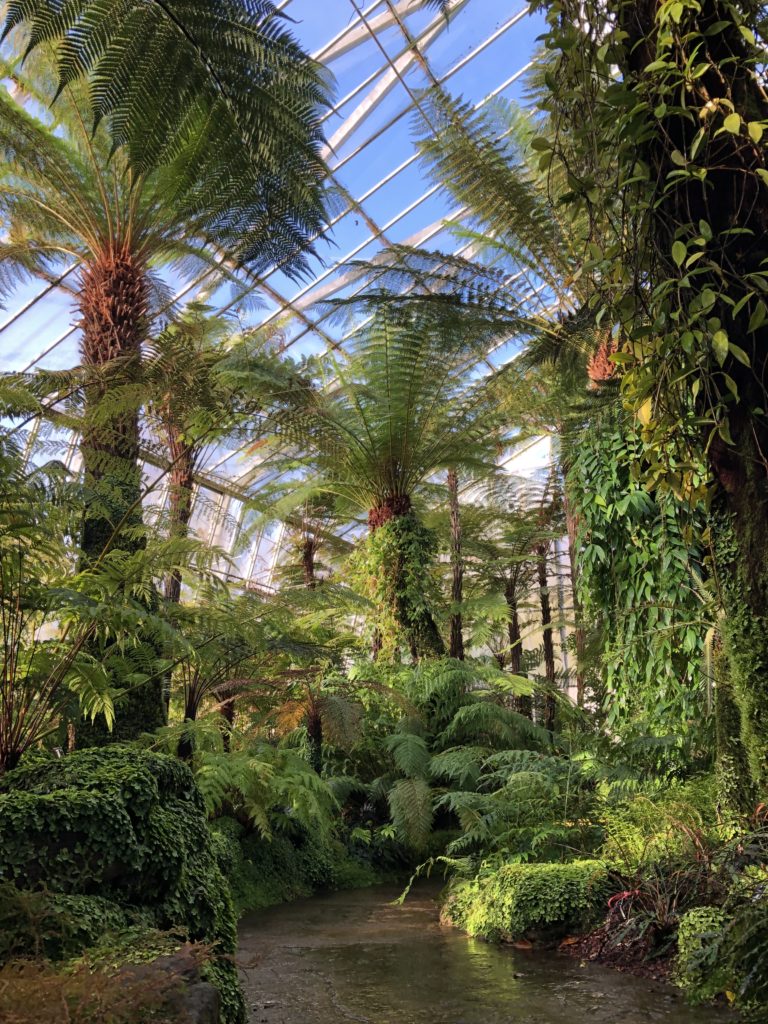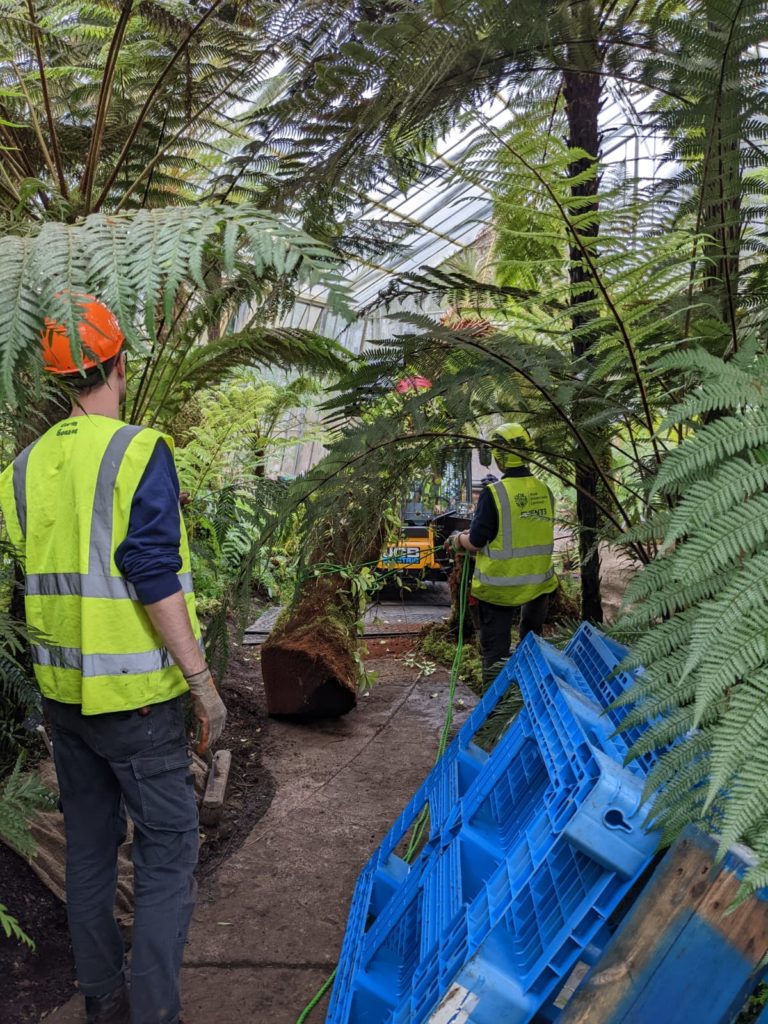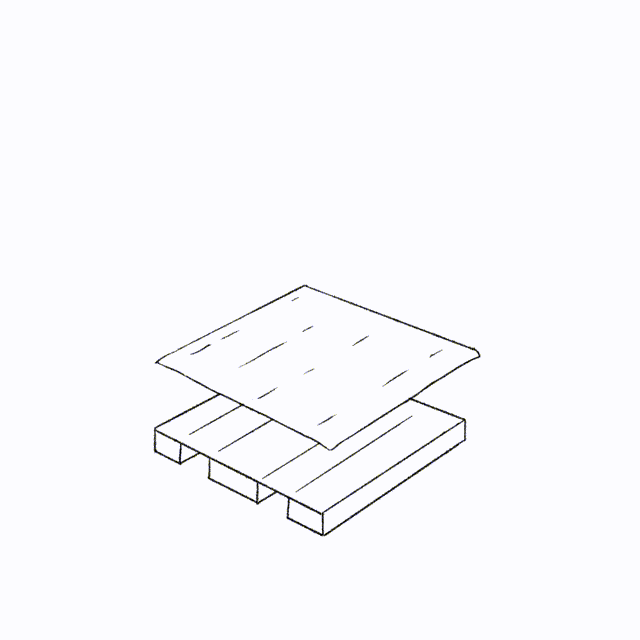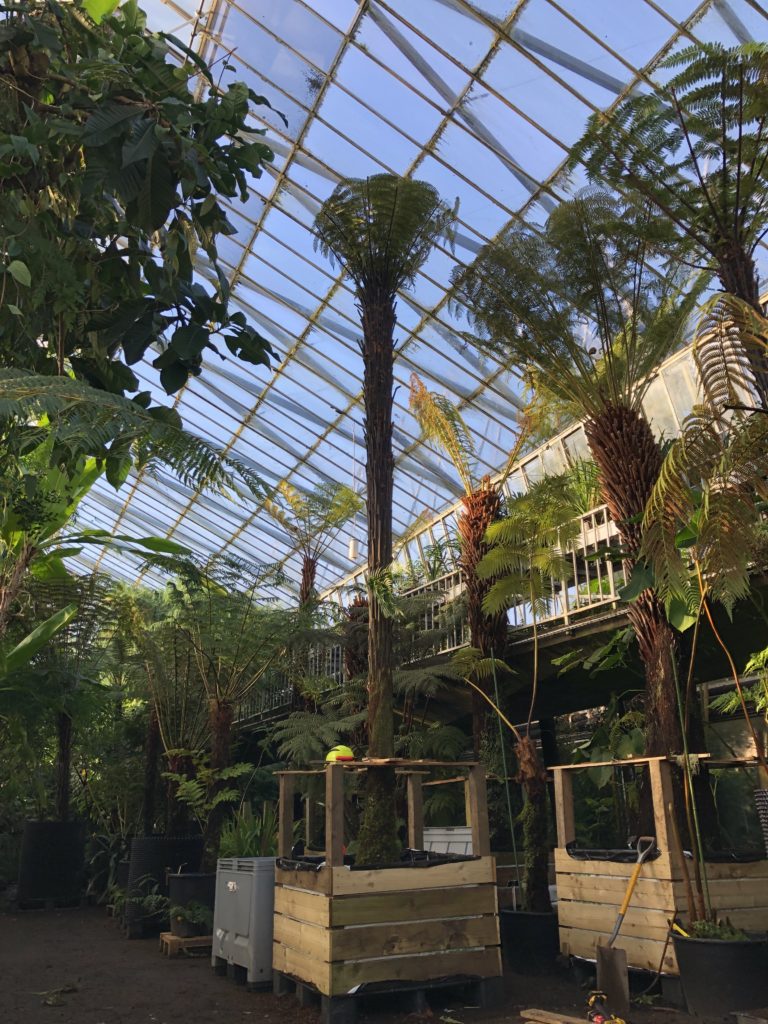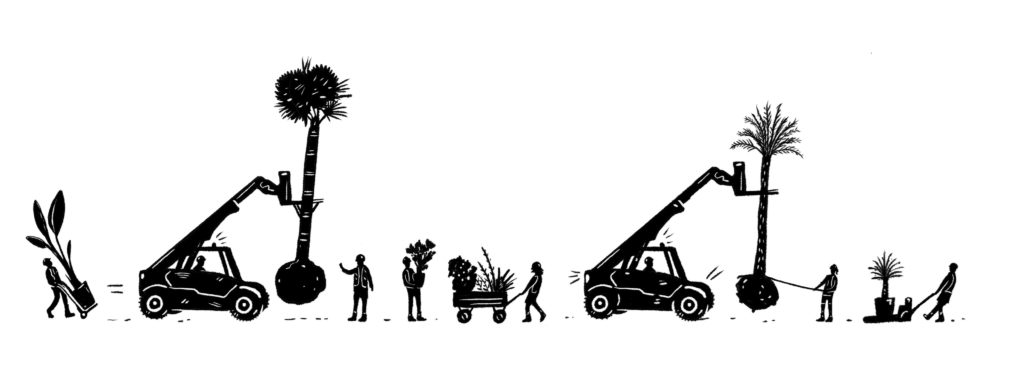A different decant
Two years into the Edinburgh Biomes Project and we’ve already seen three large display Glasshouses emptied, along with the move of a massive collection of outdoor plants and multiple rearrangements of many of the potted glasshouse collections. In 2022, the Horticulture team fixed their attention on the Ferns and Fossils Glasshouse, home to an impressive species diversity from an ancient group of plants. The collection includes some tall Dicksonia antarctica tree ferns with liverworts and mosses like Hypopterygium tamarisci clinging to their trunks, along with giant horsetails such as Equisetum myriochaetum and various fern species of Blechnum and Cyathea, mixed with conifers of the Amentotaxus and Acmopyle genera. This glasshouse collection presented a whole set of different challenges to those encountered with the earlier decants.
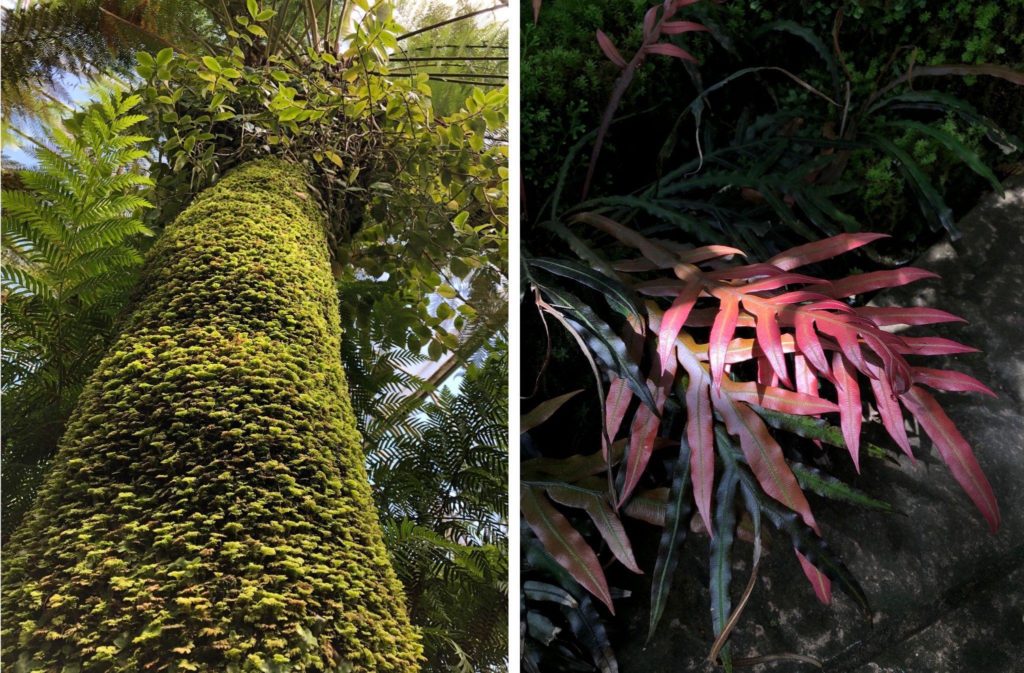
Right: The vibrant new growth of Blechnum patersonii in a break of sunlight.
[Photos: Kevin Bannon]
A Glasshouse ‘decant’ involves more than the simple removal of plants; it’s the careful dismantling of a collection of plants that have grown together for years and have become an interwoven natural landscape.
The plants are shaped over time within the rocks and borders of the glasshouse; mature plants with their roots deep in the landscaped ground, layers of smaller plants that grow into the available spaces, topographies of stone and fossils, and sculptured pathways and water features. The decant of this landscape began with the creation of two lay-down (‘hardstanding’) spaces around the perimeter of the Glasshouse. You can read more about this early work in Hazel Frances’ Stories from the Biomes: Fern House Decant Begins.
The biggest are the first to leave
Following the creation of hardstanding on the south side of the house, plans were made to move five of the Dicksonia antarctica tree ferns to Logan Botanic Garden. Although they appear to be the type of large plants that should be left ‘til last, these tall ferns had to come out first.
Dotted around the house, towering above the rest of the collection were nine Dicksonia antarctica tree ferns weighing roughly 250 – 300kg each. All carefully lowered in their own unique way, the first five were moved and planted outdoors at Logan, while the other four were lifted and carefully potted on the hardstanding space created in the Temperate Lands Glasshouse.
The animation below is a before and after comparison showing how the planting beds had to be adjusted, and tree ferns removed, to allow the electric telehandler to enter the glasshouse. The success of this strategy meant that we could use the telehandler to help lower the remaining tree ferns.
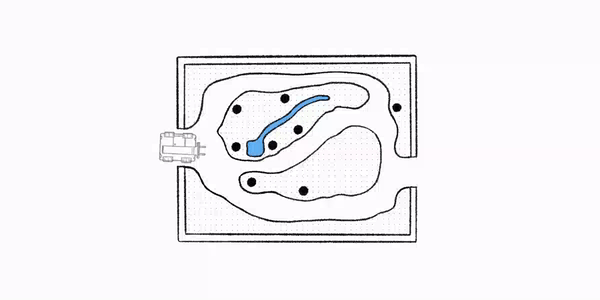
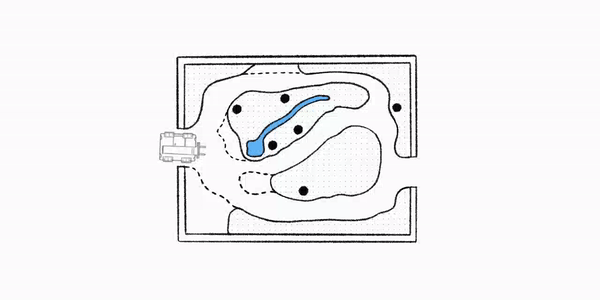
Despite the help from the telehandler, there were challenges to overcome due to the tight awkward spaces we were working in. Much of the landscape around each tree fern remained intact while we moved these tall and extremely heavy tree ferns, so manoeuvring had to be slow and careful to ensure there is no damage to the surrounding collection.
An interesting thing about Dicksonia antarctica tree ferns is that their trunks are made from roots; this means they can be moved without digging up a huge root ball. Instead, the trunk can be cut at the base, the roots kept moist, and then replanted in their new home. All five of the Dicksonia tree ferns moved to Logan Botanic Garden are cut in this way.
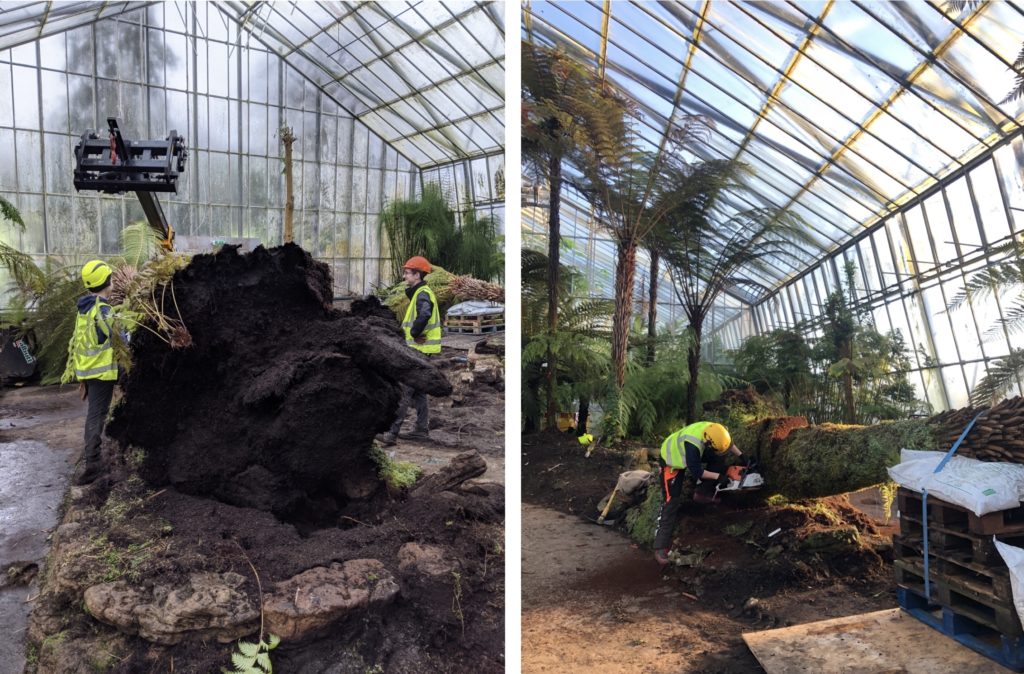
Right: Roween Seuss uses a chainsaw to cut the stem for later planting and added ease of manoeuvring that fern out of the house. Despite being cut, the roots from the trunk will still grow and the tree fern will stabilise itself over time once planted. [Photo: Kevin Bannon]
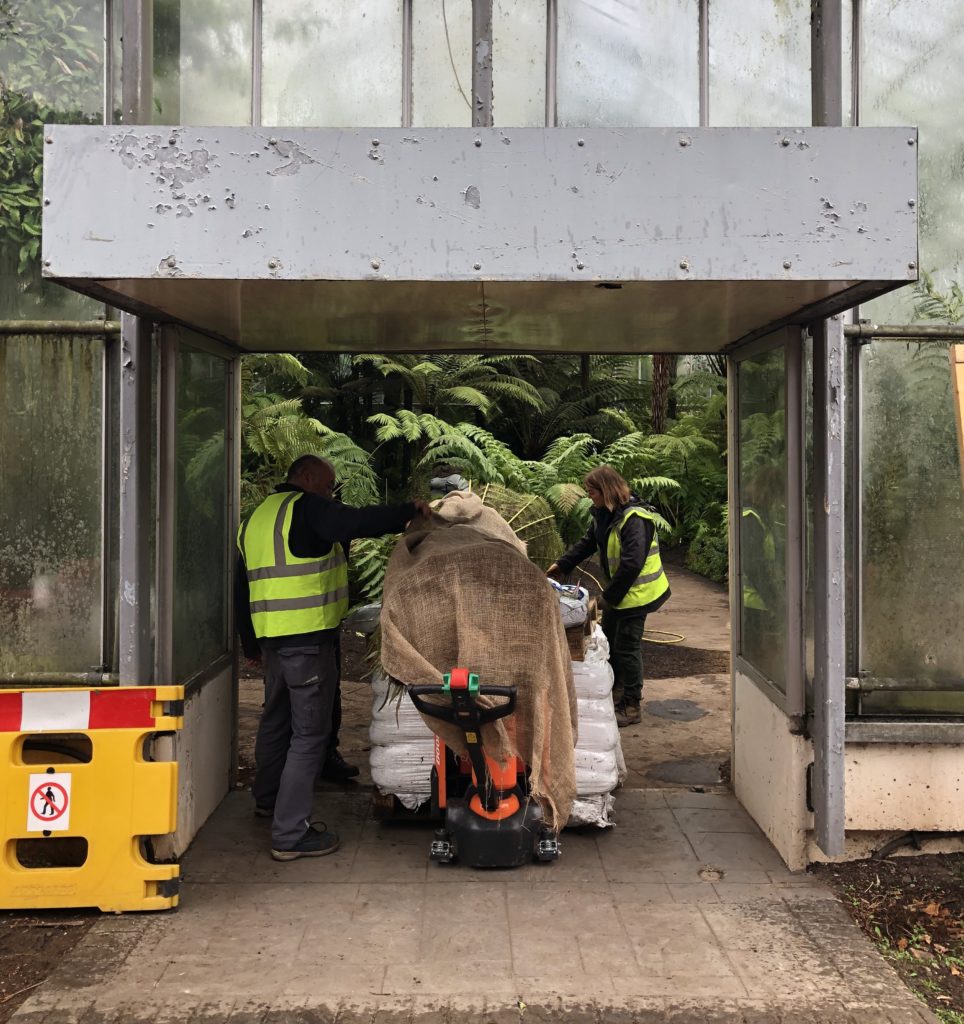
Machinery, materials and muscle
The manual labour of the horticulture team is the bedrock of any decant, and the purpose of machinery is to make it easier and safer. The team are trained on various machines to help with the project, ranging from a small manual pallet truck to a 5½ tonne electric telescopic handler (telehandler).
Digger and Dumper
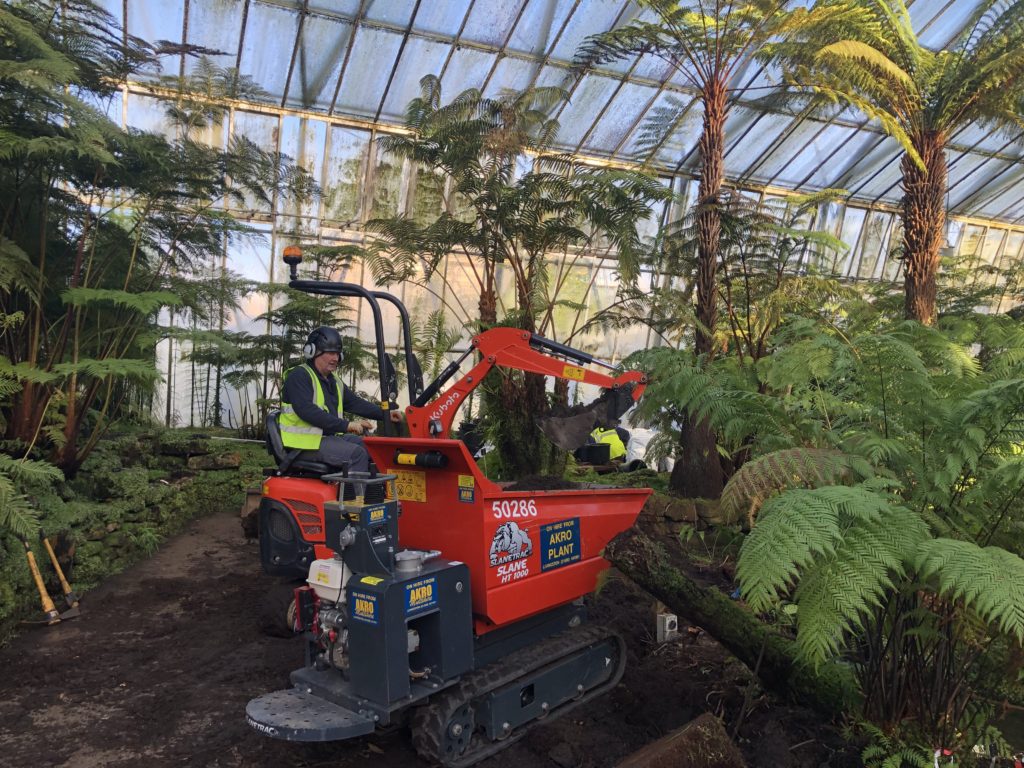
Pallet Trucks
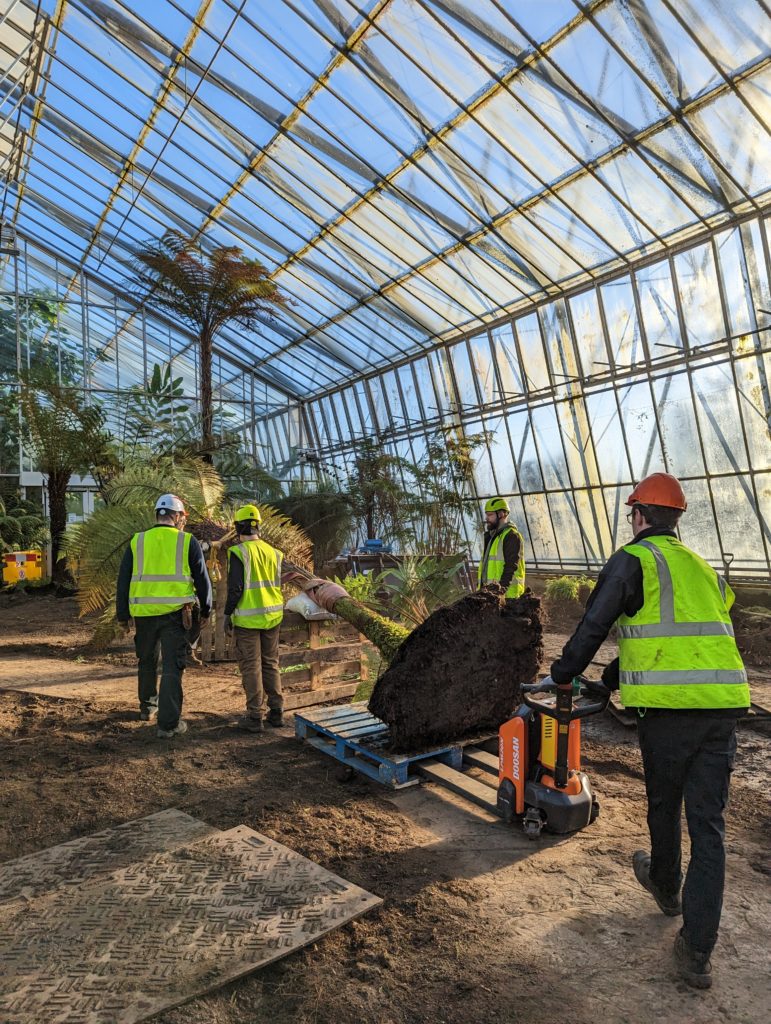
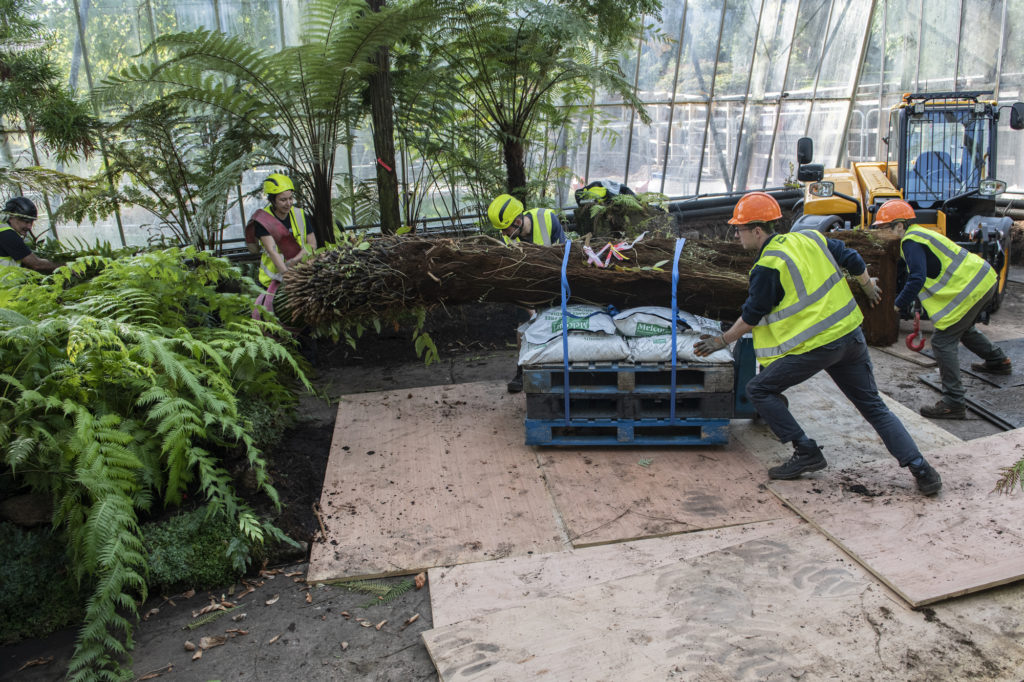
Trollies and Ratchets

Electric Telehandler and Attachments
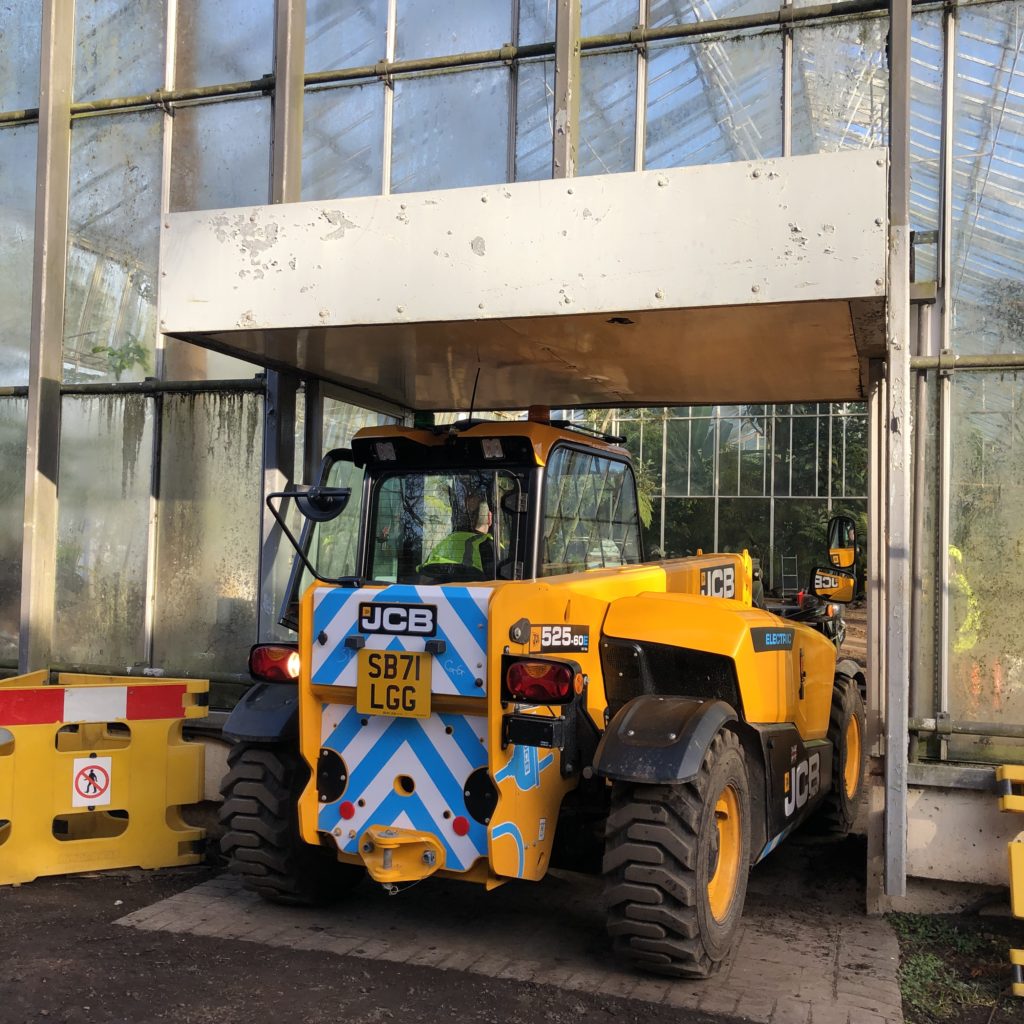
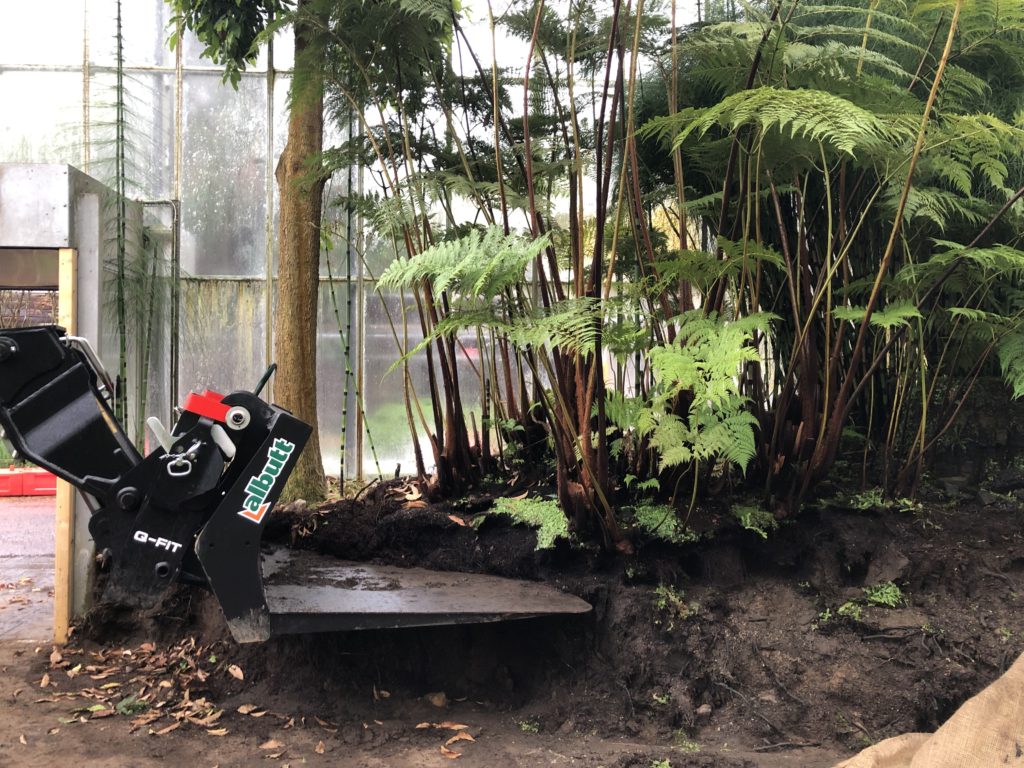
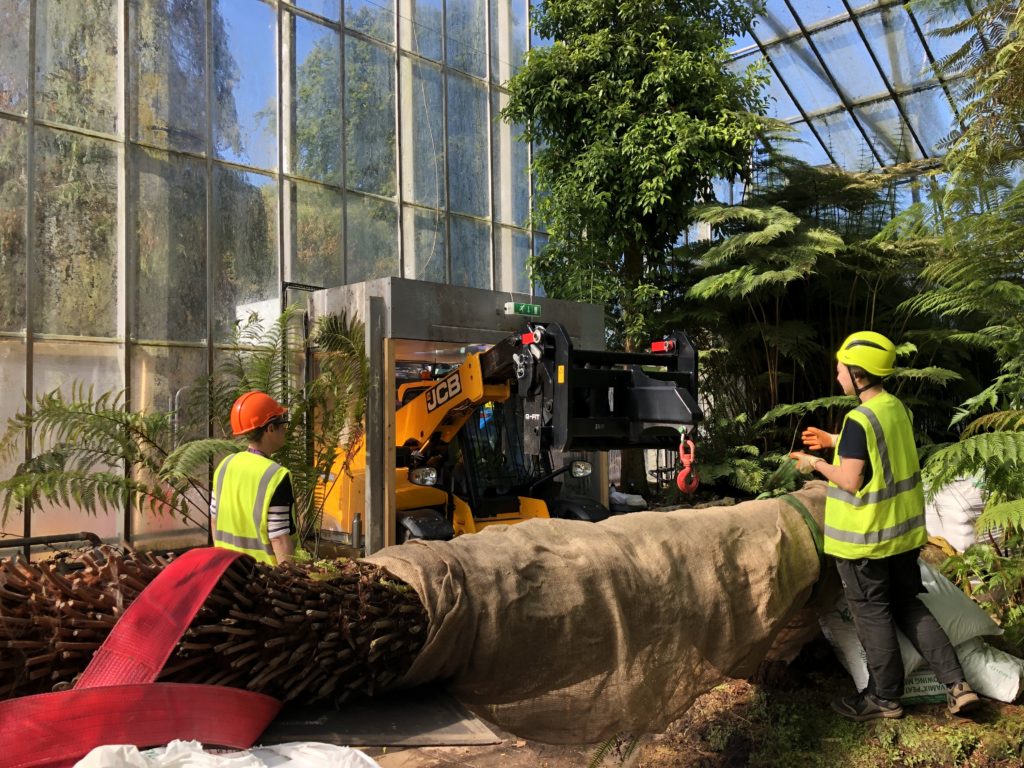
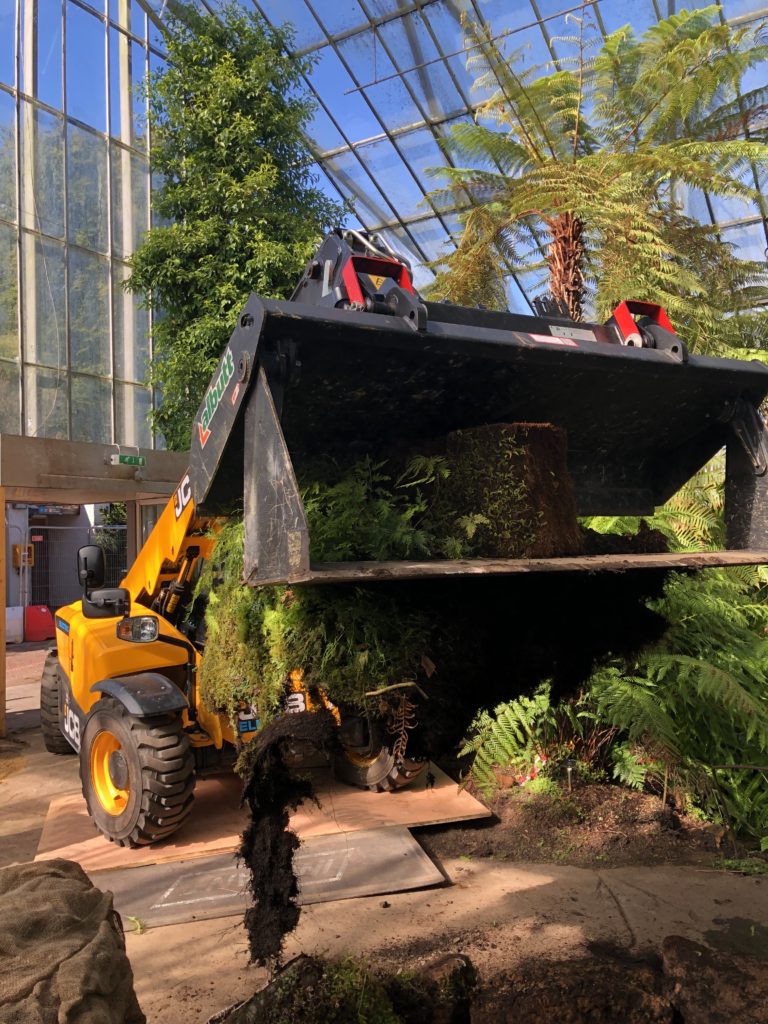
Jackhammer
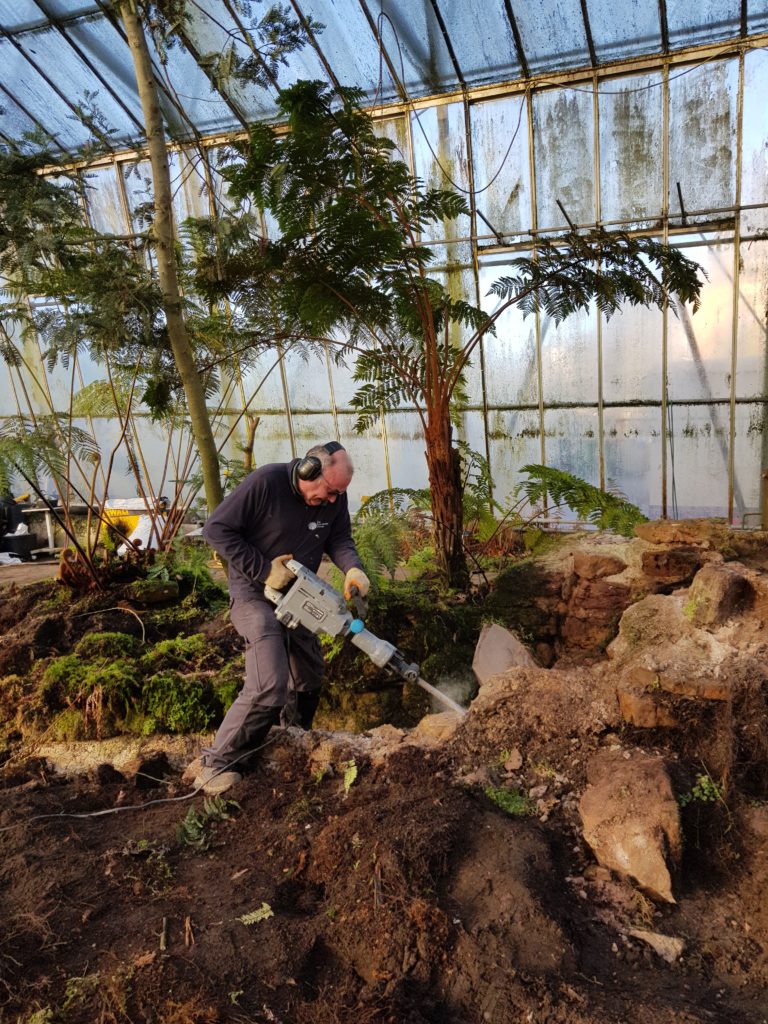
Rocks, rocks and more rocks
A defining component of the fern house decant is the large amount of rockwork that needed to be removed. The Ferns and Fossils Glasshouse landscape contained over 1,000 rocks of all types and sizes, with many of the tall tree ferns anchored at their base by a halo of surrounding rocks. The true size of most of the rockwork is hidden beneath the soil, and this only becomes apparent when each planting bed is tackled.
Periodically, during the decant, a full day of work is focused on the removal of the rocks, calling on large numbers of the wider team to help in the strenuous work.
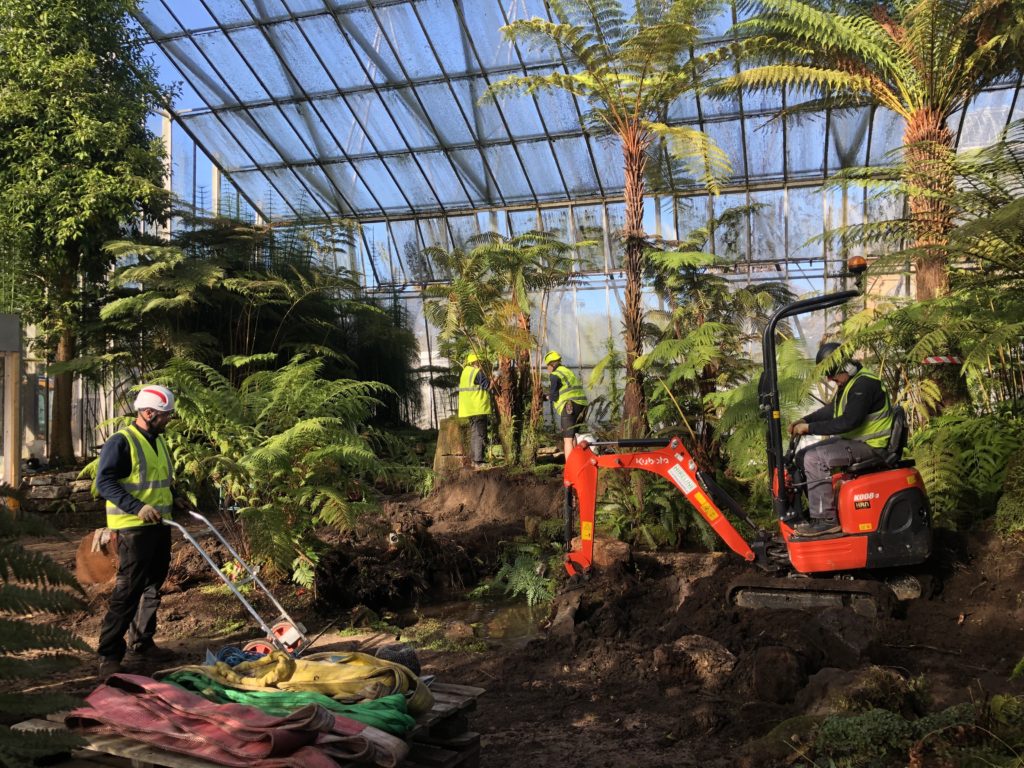
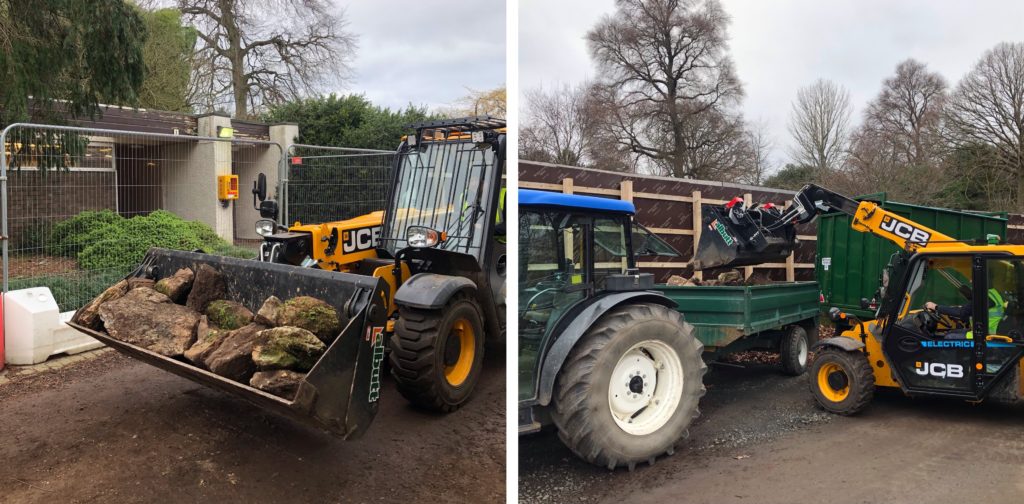
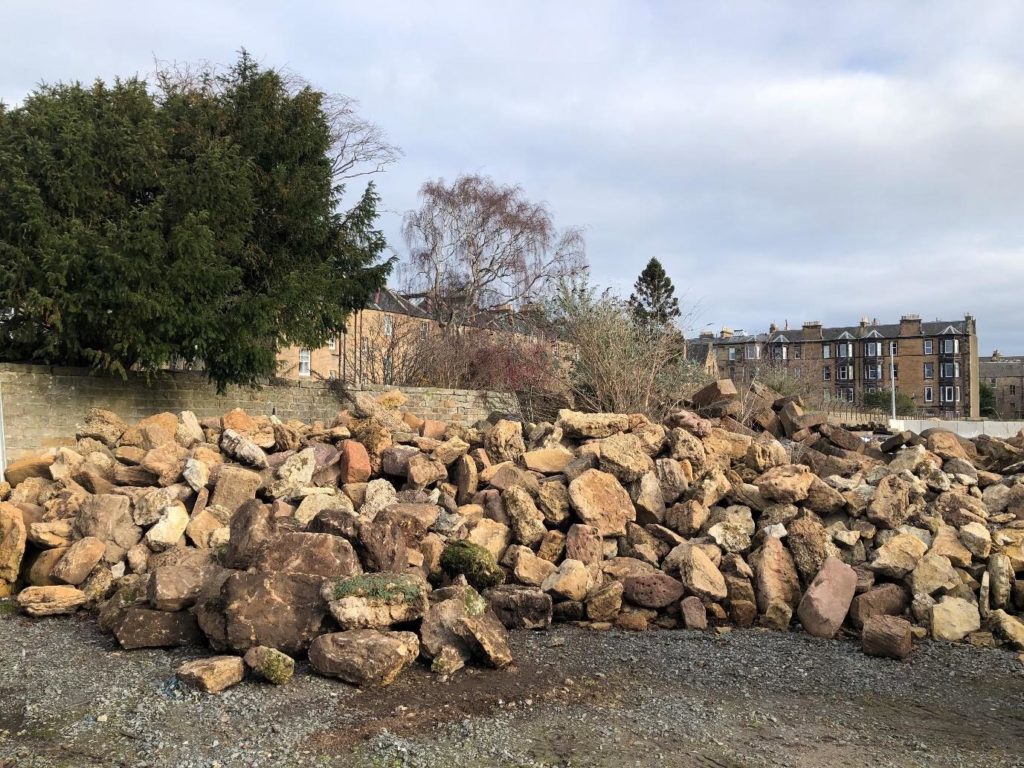
The (almost) last plants

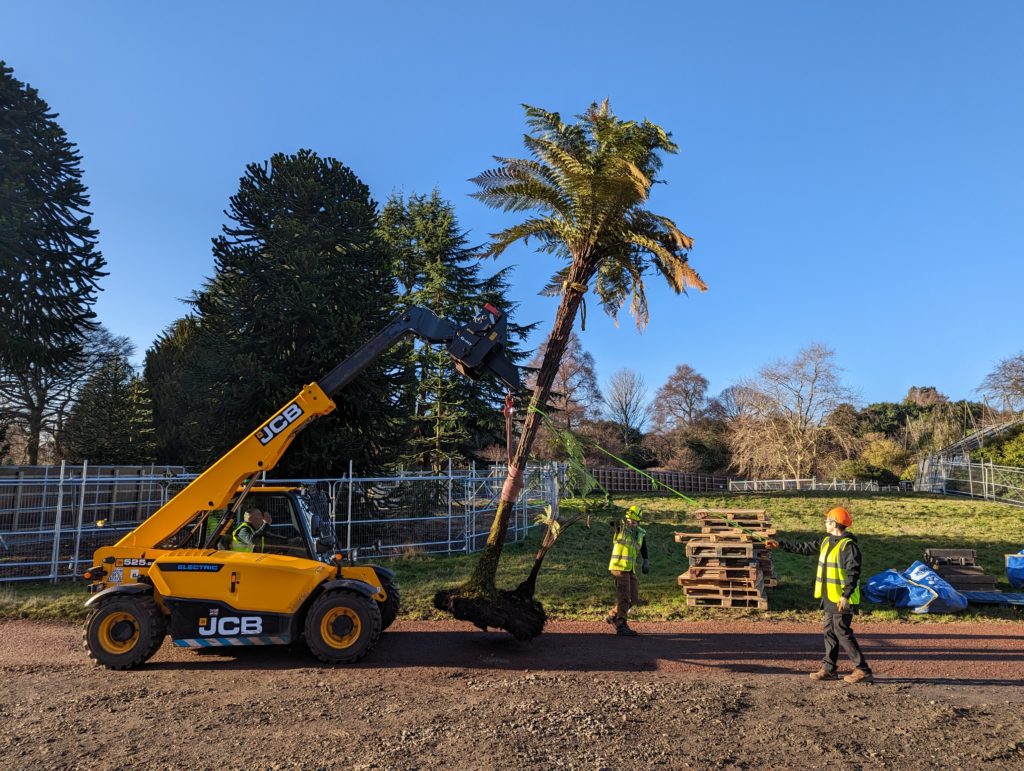
Where the plants go
As was the case with the decant of the Palm Houses in 2021, the plants from the Ferns and Fossils Glasshouse have to squeeze in amongst our other collections – with the largest of them destined for the tall Temperate Lands Glasshouse.
The decant process to leave the Fern House is effectively reversed when arriving at the Temperate Lands Glasshouse. We lay protective ground guards on the slabs outside the glasshouse, and on the floor inside. While still outside, we lower the tree ferns, brace them horizontally and manoeuvre them through the low door into the glasshouse. As we progress and add more plants, the space for manoeuvring within the glasshouse becomes tighter and tighter, requiring more and more precise planning and moving.
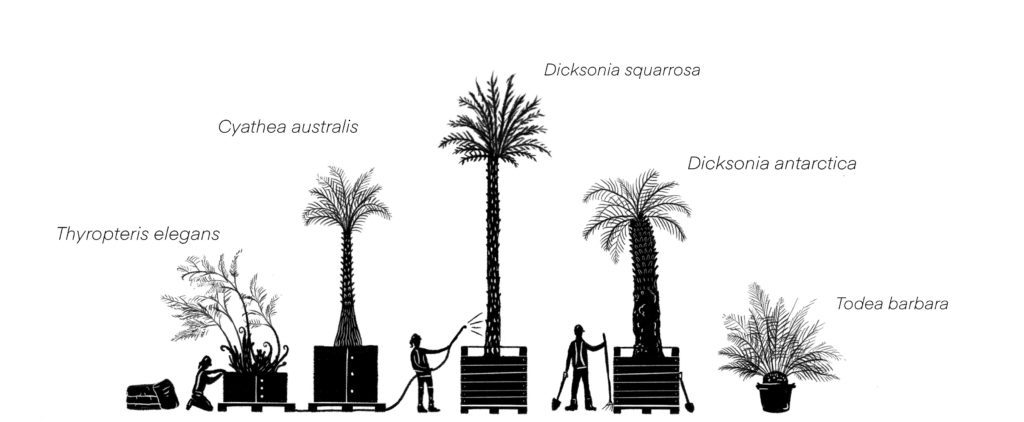
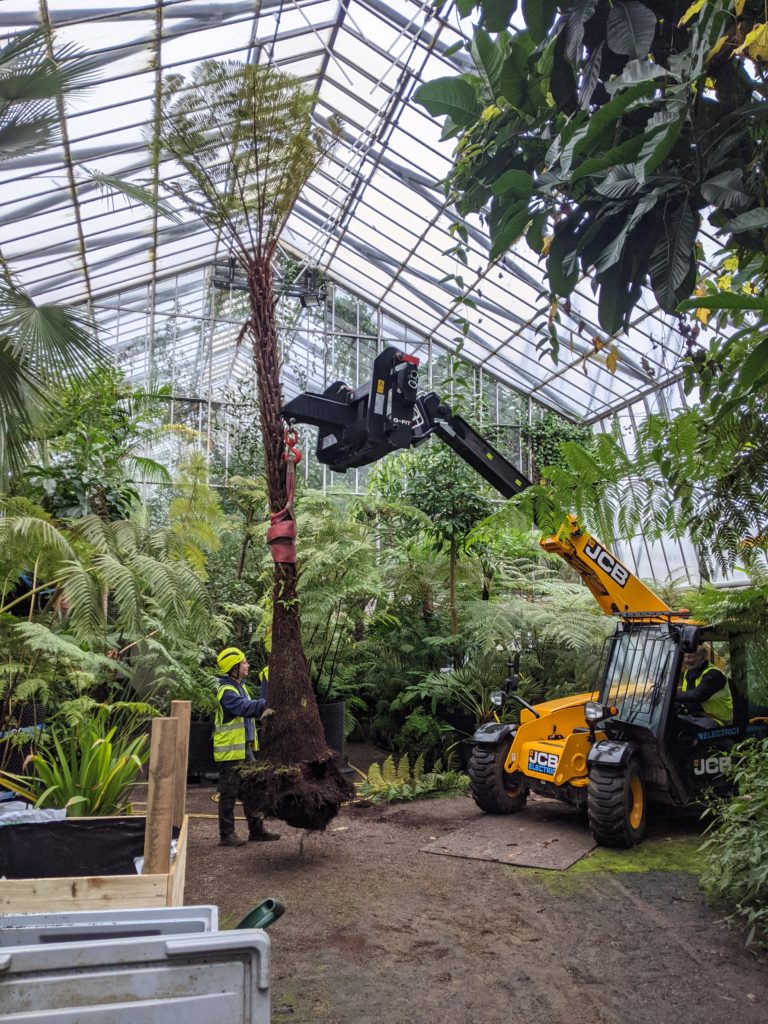
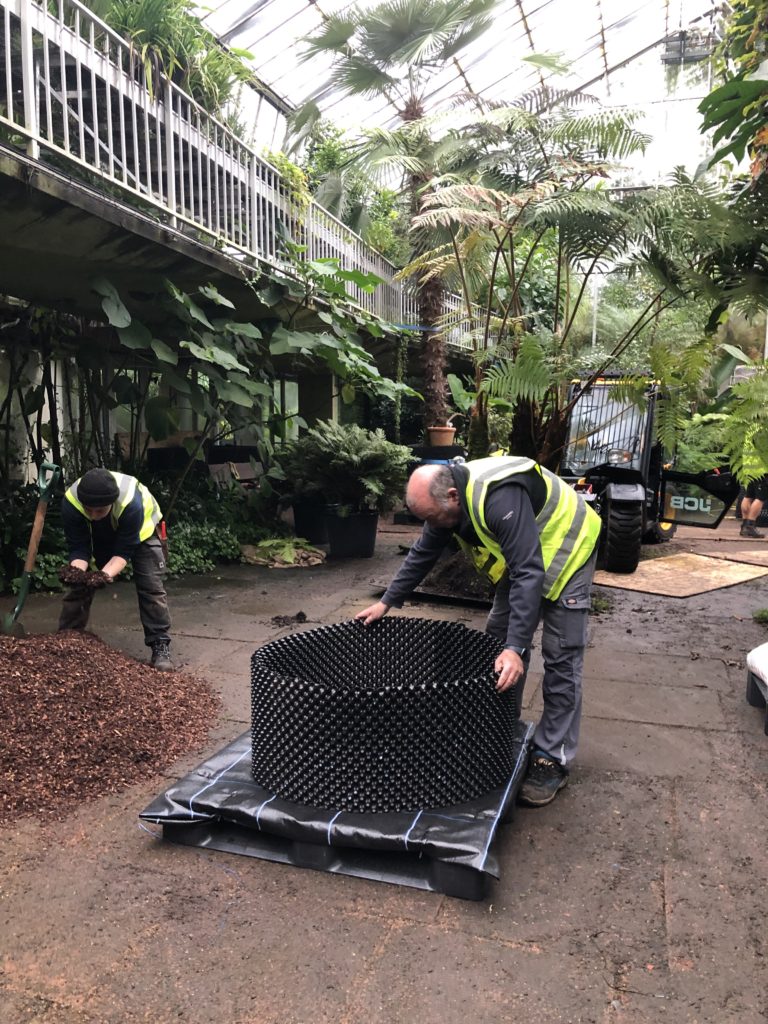
The illustration below shows the basic process of how we are using Air-Pots®. First, a base layer is created using a strip of Air-Pot® material, and this is filled with compost. The plant is then carefully lowered onto this base and held in place while the root ball is wrapped with a larger piece of Air-Pot®. Next, compost is added with care so as not to damage the roots. With every plant, there is a need for adjustments in pot size, so the beauty of this system is we can tailor each of the pots to suit.
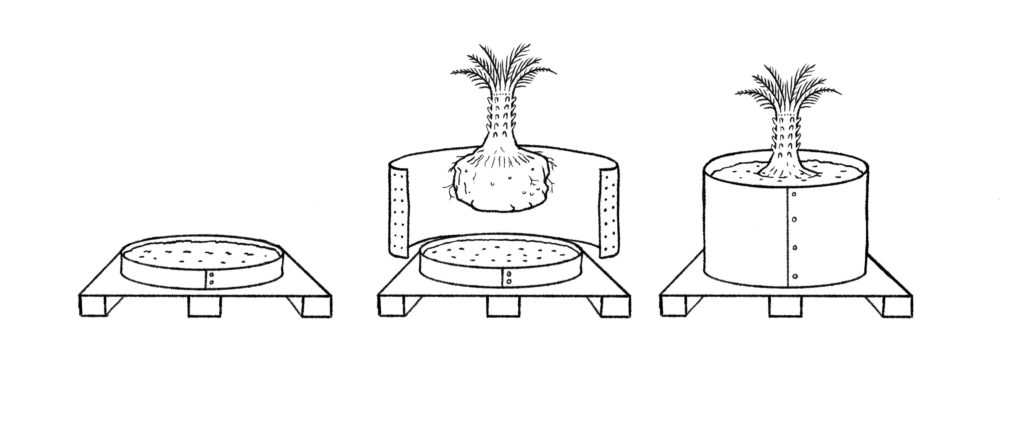
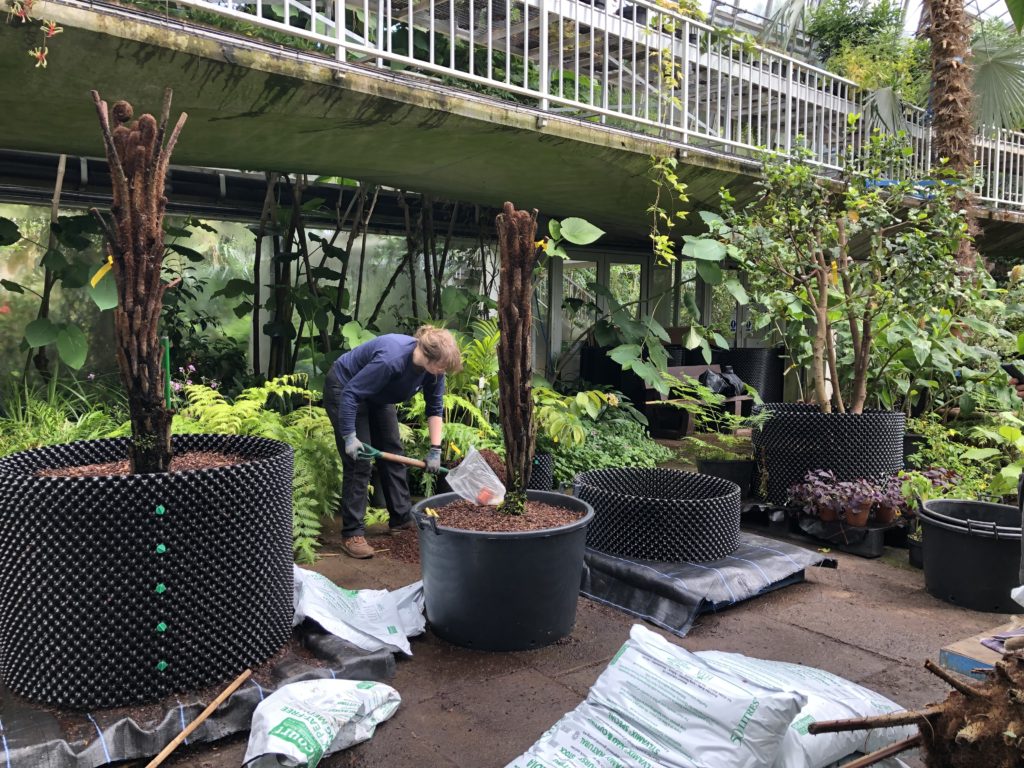
When it came to the largest of the tree ferns, another method was necessary. Neil Watherston constructed six large boxes using treated wood, to give the added strength and stability required. Still using a plastic pallet as a base so they remain moveable, the box is fixed on top, and the inside is lined with plastic. The animation below shows the process of potting a large tree fern into one these boxes.
A good sign
Moving any plant is a risk, but this can be especially true for mature plants. The plants go through a lot of stress; they are being ripped from conditions they have become accustomed to over years, or in some cases, over several decades. They have their roots and foliage cut, and these particular ferns are placed in pots where the risk of drought or overwatering is increased. However, in the hands of a highly skilled horticulture team, the ferns are flourishing once again in their new home.

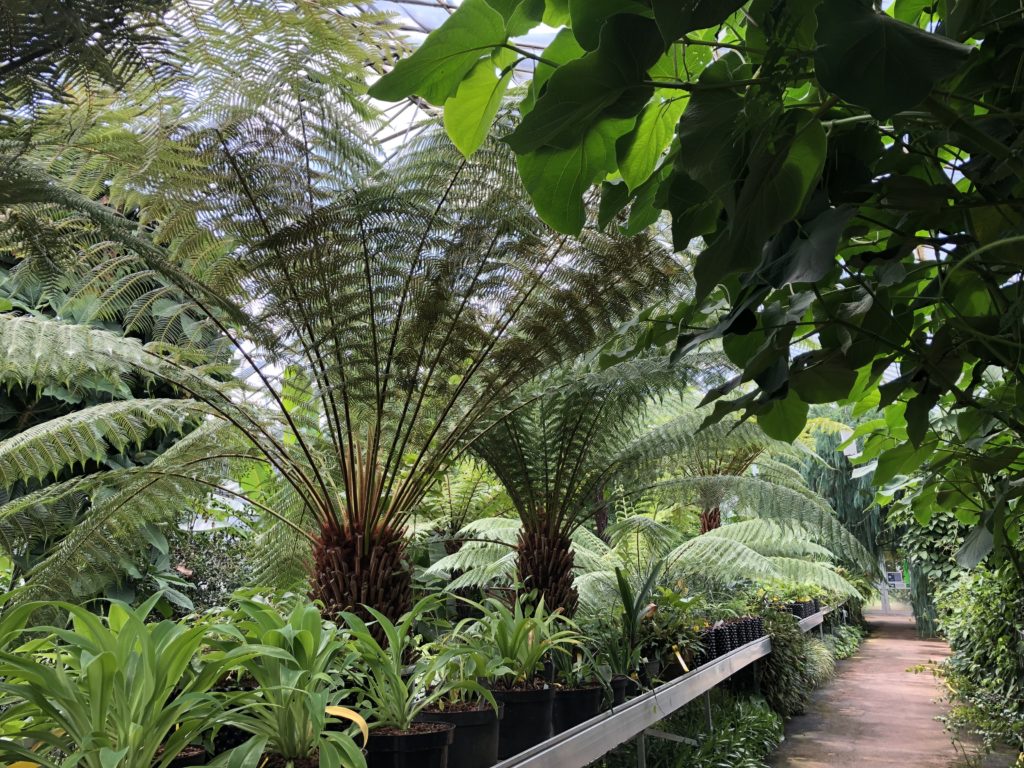
With another glasshouse done and more to go, the horticultural team moves forward in laying the groundwork towards creating RBGE’s glasshouses for the future.

